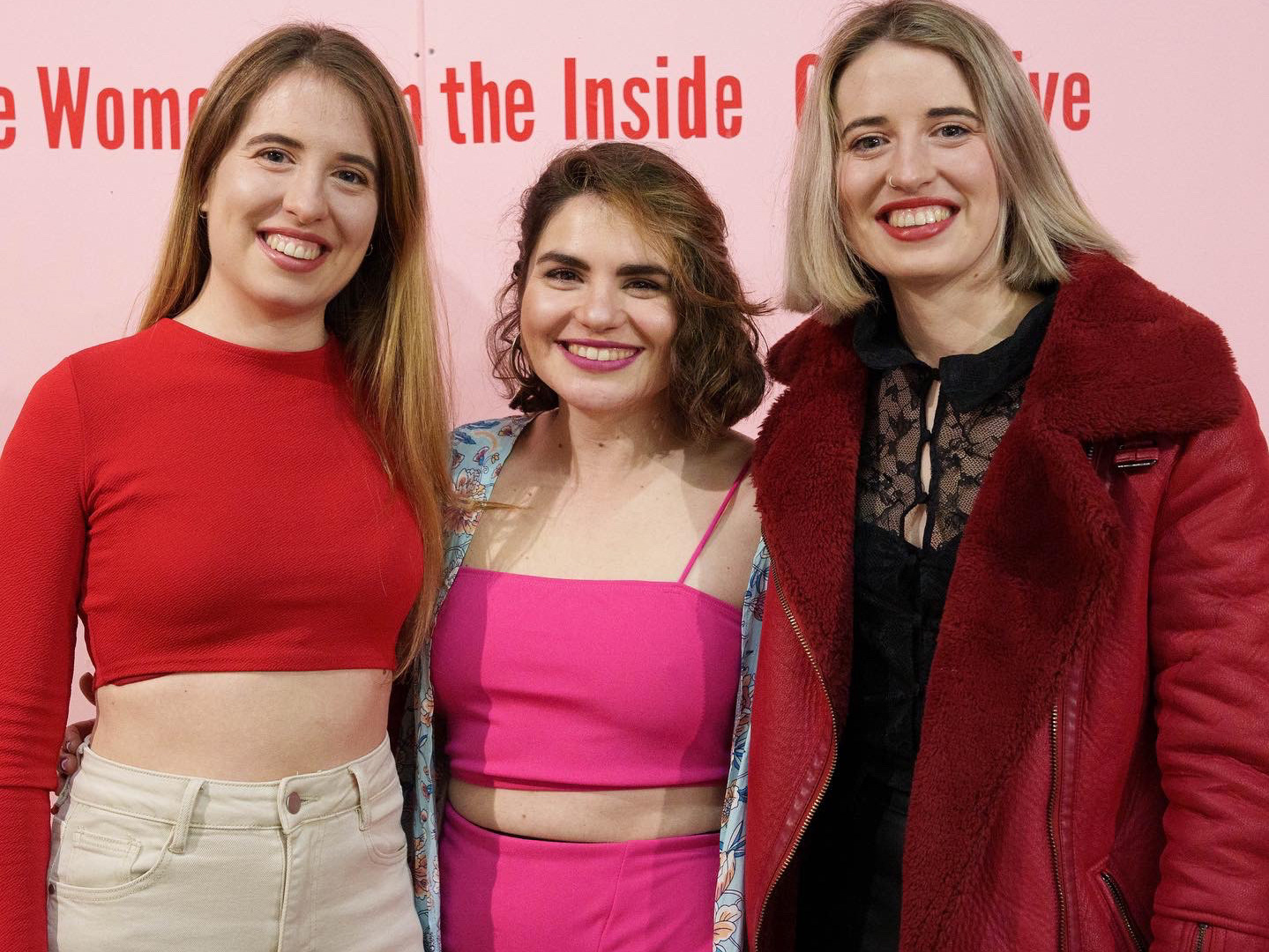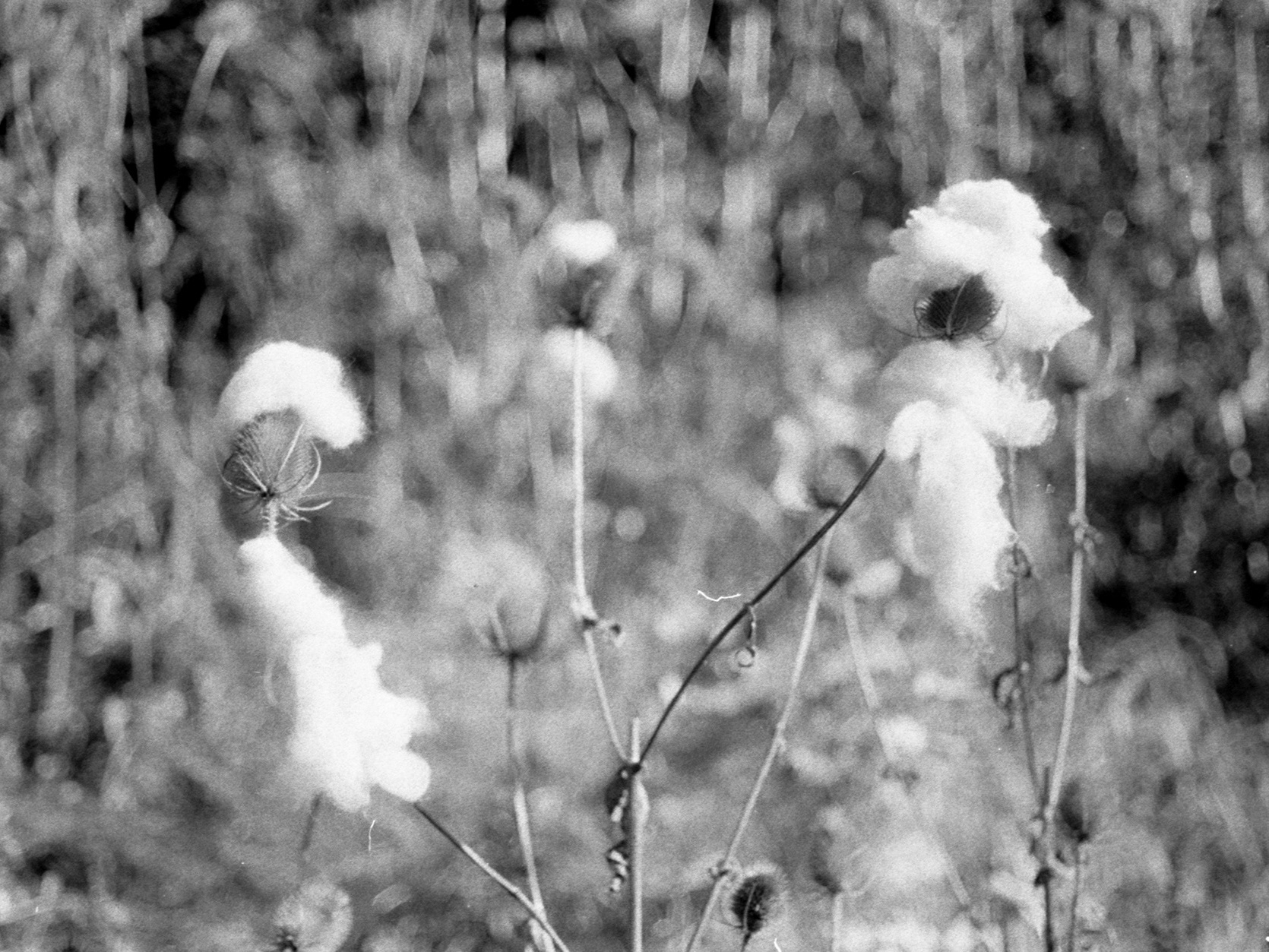Collaborative Group Ritual created for The Level 9 Professional Diploma in Art and Ecology, The National College of Art and Design
This collaborative group project, created by Marguerite Quinlan, Fiona Flinn, and Maria McSweeney, centered around a ritual piece inspired by their in-depth research into two species: the teasel and the spider.
The ritual began with a musical group procession with banners and using the teasel as an instrument. They moved from a cluster of smaller teasels to the "Mother Teasel," traversing the landscape of the field. Upon arrival, they offered their teasel instruments to the Mother Teasel as a symbolic gesture. Additionally, they collaboratively crafted with the group a circular woven wool piece, which they presented as an offering to "Grandmother Spider."
Participants were then invited to create individual woven pieces using handmade looms and plant materials gathered from the field. These personal creations were also offered to the teasel and spider.
Throughout the ritual, each of the three artists contributed their voice by reading original written pieces. Marguerite, Fiona, and Maria wore handwoven dresses and headscarves printed with motifs representing the teasel and spider, visually connecting them to the themes of their work.
Maria's written piece delved into the historical connections between the spider, the teasel, and industrial textile production. She explored the intricate parallels between these species and the art of weaving, reflecting on their shared histories within the industrial weaving traditions of the Liberties and beyond. Her words invited participants to envision a more sustainable future for textile production, one that challenges the exploitative practices of industrial capitalism. She delivered her piece while the group engaged in crafting their own woven looms, using natural materials gathered from the field site
Performed:
The NCAD Field as part of the Level 9 Professional Diploma in Art and Ecology.


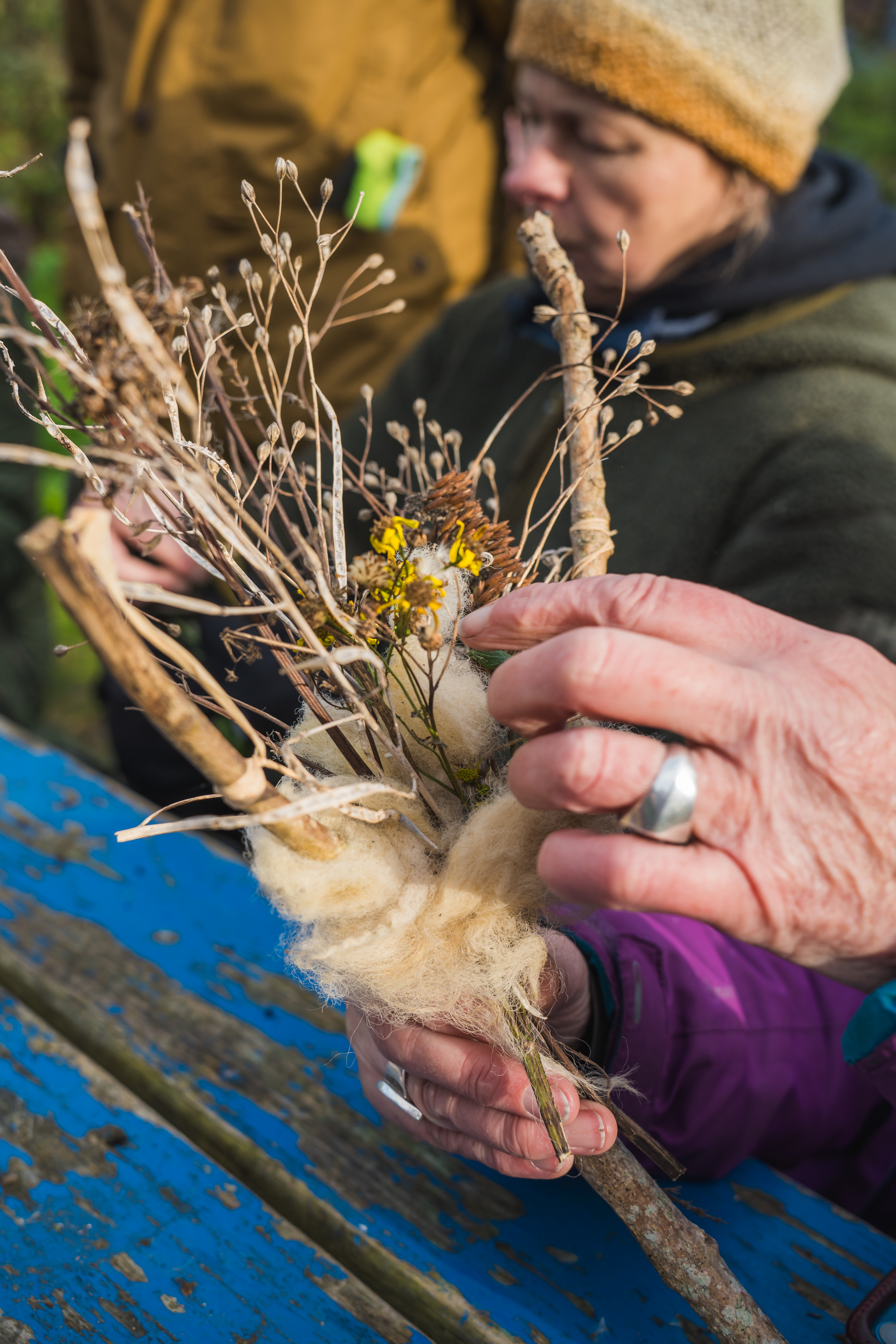


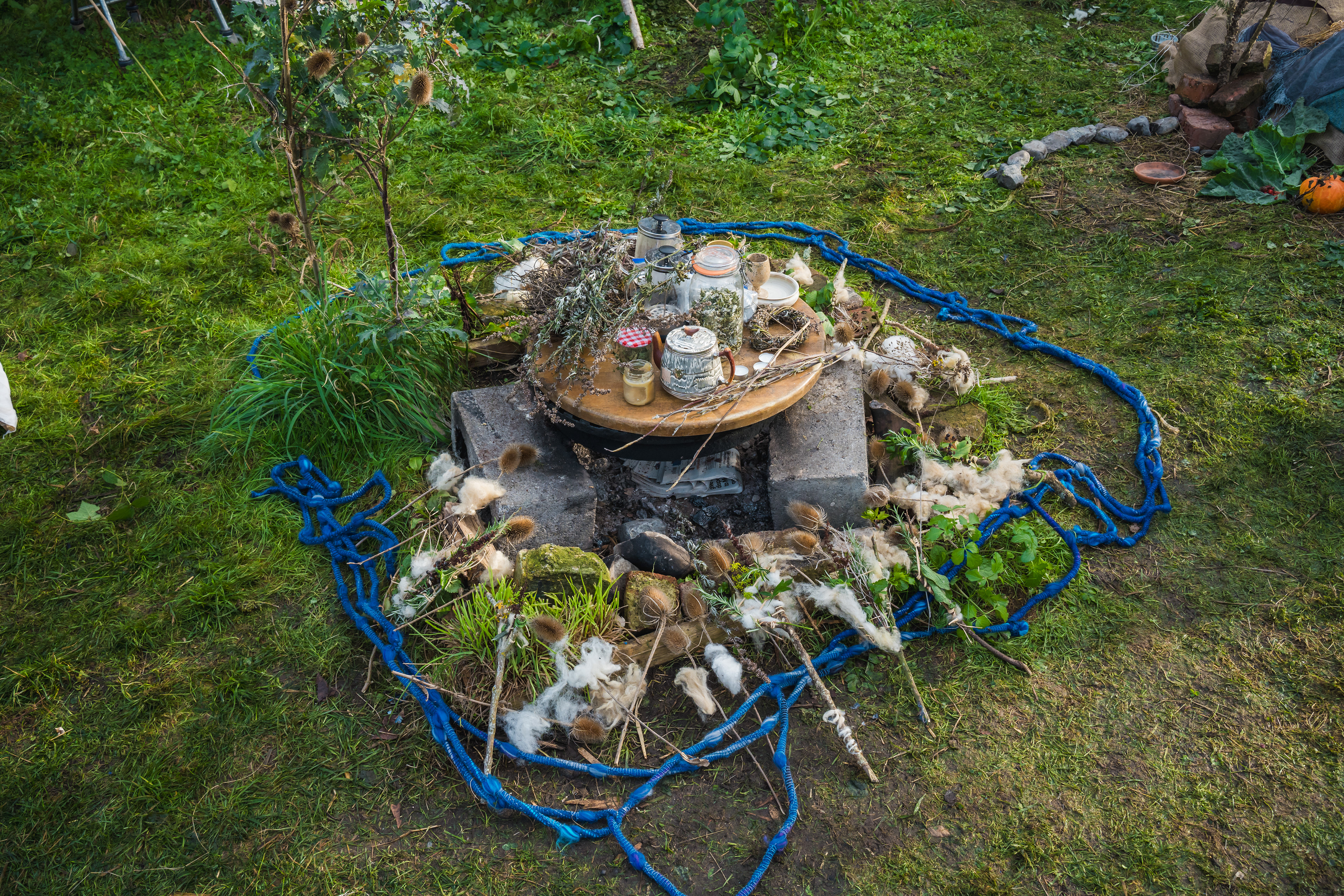


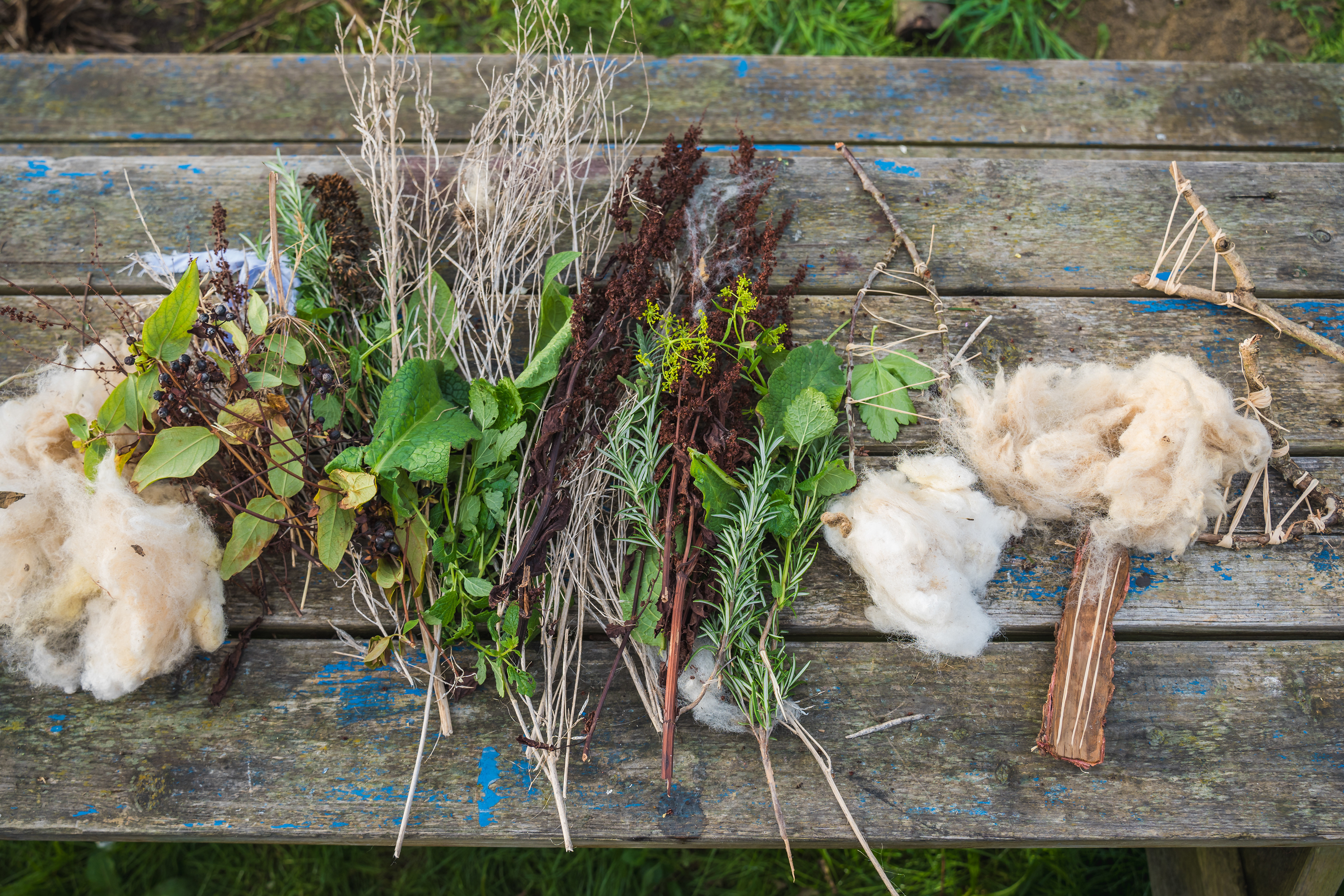





Marias spoken word piece:
I would like to take a moment to remember and reflect on the extensive weaving and textile production that flourished in the Liberties from the 1600s to the late 1800s.
This was a time when thousands of working-class people were employed to produce handwoven fabrics, including cotton, wool, silk, and poplin.
The industry began with wool and later evolved to include silk, brought to Ireland by the French Huguenots. This development led to the creation of silk poplin, a luxurious fabric introduced by David Digges La Touche. Silk poplin, a blend of silk and wool, became a significant luxury export for Ireland at this time.
Today, we particularly acknowledge the role of silk poplin in connecting us to the species we celebrate today. The weaving of silk reminds of the artistry of spiders' webs. The weaving of wool reminds us of the teasel and it role in the industrial textile industry for raising nap on woolen fabrics
I invite you to consider what life might have been like for the people who worked tirelessly to create silk poplin and other textiles in the Liberties during the height of Dublin's textile industry.
Was this mass industry ultimately beneficial or detrimental to their lives?
On the one hand, the textile trade provided stable employment, a sense of purpose, and a strong community for those involved. The industry brought greater wealth to the city, enabling workers to provide for their families. Many may have taken pride in their craftsmanship and felt a sense of belonging through shared labor.
On the other hand, the harsh realities of industrial textile production cannot be ignored. Were the working conditions safe? Did the physical demands of the job, combined with the risks posed by industrial machinery, lead to long-term health issues or injuries? The Liberties at the time was considered a slum during this period for working class people. Were many workers weaving not out of passion but driven by the need to support their families?
There’s also the question of alienation created by industrial production fueled by capitalism. Did these workers feel disconnected from the products they created, knowing their luxurious textiles were made for the middle and upper classes of Dublin, or exported overseas? And what became of these communities and people when textile production declined in the late 1800s?
Looking at the present day, we see echoes of these conditions in the lives of workers in developing countries such as Bangladesh, Vietnam, India, Pakistan, and China. Many endure harsh, unsafe, and exploitative working environments to produce textiles for the global market, reminiscent of the possible struggles faced by Dublin’s textile workers 200 years ago.
We also need to acknowledge the detrimental environmental impacts of industrial textile production, particularly the processes of importing and exporting these goods around the world.
As we weave with found, sustainable materials, to give back to the teasel and the spider, we want to remember the rich industrial history of weaving around us.
As we weave today, let us reflect on the hands that wove before us in the surrounding landscape and imagine new possibilities for weaving in the modern world.
New possibilities that would honor the natural world and the people who labor within it. We might envision a future where textile production is no longer harmful to people and the planet but rooted in sustainability.
A new industry that supporters local designers and makers who value ethical practices. A future where workers are not alienated from their craft, but instead empowered by it.

